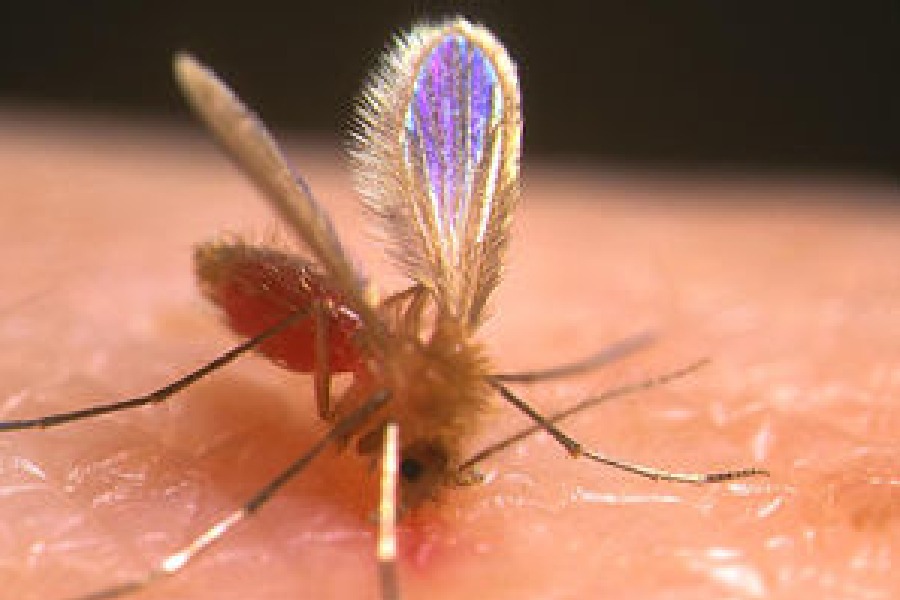A vector-borne disease, which can turn fatal if not treated, had over 77,000 reported cases in India in 1992. In 2023, the number of reported cases came down to 595.
A symposium of doctors, scientists, policymakersand philanthropic organisations on Thursday tookstock of India’s efforts to eliminate kala-azar, the second deadliest parasitic disease after malaria.
Visceral leishmaniasis (VL), also known as kala-azar, is transmitted to humans through the bite of an infected sandfly. The symptoms include prolonged fever, loss of weight, appetite and swelling of the spleen and the liver.
The introduction of liposomal amphotericin B, given as a single dose, intravenousjab, has been a game-changer in reducing the diseaseburden.
The participants said India’s kala-azar elimination programme, which took off in 1991, had made solid progress because of a “collaboration between all stakeholders”.
But they also cautioned about a “last-mile challenge”, in the form of a dermal sequel to kala-azar. It is called post-kala-azar dermal leishmaniasis (PKLD).
“These patients (of PKLD) are the reservoirs of the disease. They are freely roaming around in the community,” Mitali Chatterjee, the head of the department of pharmacology, at the Institute of Post-Graduate Medical Education and Research (IPGMER)-SSKM Hospital, told The Telegraph on the sidelines of the programme at a New Town hotel.
Some cases of kala-azar leave lesions on the skin. The sandfly comes and sits there. It takes a blood meal that contains the leishmaniasis parasite.
The sandfly then goes and bites other people who are likely to develop kala-azar.
The two-day symposium is called the 7th Post Kala Azar Dermal Leishmaniasis (PKDL) Consortium Meeting.
Chatterjee said: “They do not need treatment because they do not have an illness that will kill them. It just looks ugly. How do we diagnose these cases? How do we get these patients to agree to be treated? These questions led to the formation of this consortium of experts. We have clinicians, entomologists, other scientists, policymakers and other important stakeholders, trying to improve the understanding and the management of PKDL.”
According to the World Health Organisation, Visceral leishmaniasis is endemic in 75 countries in Asia, Africa and the Americas. India accounted for 18 per cent of the global disease burden in 2020, the WHO websitesays.
“Kala-azar remains a substantial public health problem in the country as it is present in 54 districts across four states — Bihar (33 out of 38 districts), Jharkhand (4 out of 24 districts), Uttar Pradesh (6 out of 75 districts) and West Bengal (11 out of 23 districts). Micro-stratification surveys reveal that there are 633 blocks in these four states that are endemic. Sporadic cases are also reported in other states,” it says.
“Kala-azar cases have decreased by 98% (1,275 cases in 2021) since the start of intensified activities in 1992 (77,102 cases). To get to the 2030 Sustainable Development Goals and WHO targets for kala-azar elimination as a public health problem, block-level incidence of cases should be reduced to less than 1 case per 10,000 population,” the website says.
In 2023, India achieved the target. Two more consecutive years of the same result would get a validation from the WHO, the participants said on Thursday.
Bhupendra Tripathi, who leads the Bill and Melinda Gates Foundation’s infectious disease and vaccine delivery efforts in India, was among the participants.
“In India, one of the sectors we had picked up to work with the government was kala-azar elimination. The collaboration started in 2013. The government was already working on it. We wanted to accelerate the pace,” Tripathi told this newspaper.
Among the attendees was Shyam Sundar, distinguished professor of medicine at Banaras Hindu University, who is credited with revolutionising the treatment of kala-azar in India. He led a study on clinical trials that led to the introduction of the single-shot liposomal amphotericin B in India. The study was published in the New England Journal for Medicine in 2010.
In a chat with The Telegraph, he looked back at the trials and tribulations of the fight against kala-azar.
“Back in the day, if one drug was found to be effective, it would not be cost-effective. Diagnosis was also a challenge. Earlier, a test would mean puncturing the spleen to draw a sample. Now, asimple blood-test (rK39) gives the result in five minutes. Earlier, the treatment would mean being in hospital for a month. Now, the single-dose IV treatment takes a day,”he said.
The symposium had a session on physician and scientist Upendranath Brahmachari, who had found the treatment for kala-azar more than a hundred years ago.











